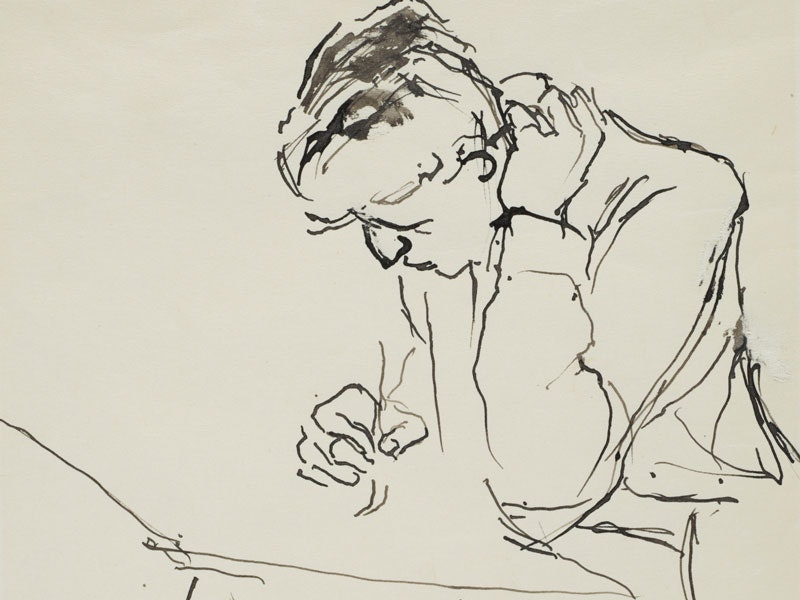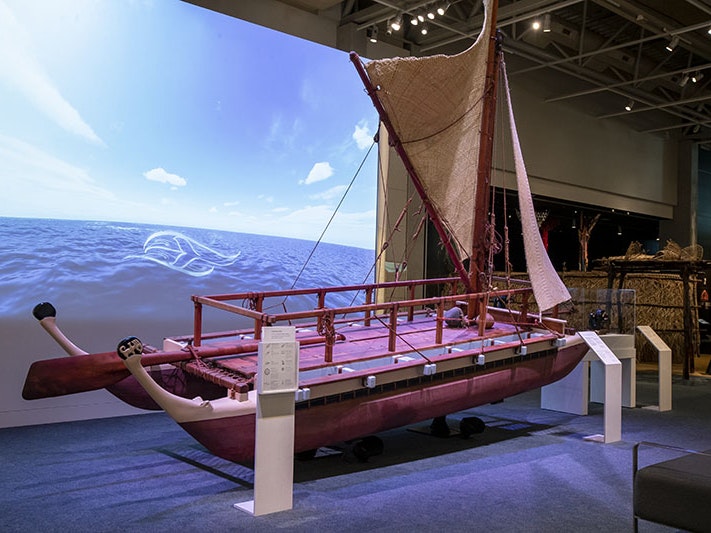
Planning a self-guided visit
All the practical information you need to know if you're planning on bringing your class for a visit at Te Papa.
Free museum entry for New Zealanders and people living in New Zealand
Open every day 10am-6pm
(except Christmas Day)
Free museum entry for New Zealanders and people living in New Zealand
Rub our pounamu boulder on a self-guided visit to Te Papa. Learn about its origins and meaning.
Duration: Five minutes
Where: Rongomaraeroa, the marae Level 4 (off Mana Whenua, or go up the ramp from Level 2)
Touch the large pounamu boulder at Rongomaraeroa to:
connect with a unique taonga that formed in Aotearoa New Zealand’s untamed elements
help remove the surface oxide, as a river would in the natural environment.
A visit to Rongomaraeroa’s pounamu supports the following topics:
Pūrākau – storytelling
Geology
Dip your hands in the water, scoop up some silica sands, and rub the oxide on the boulder to help expose the green underneath.
Look at the effects more than nine million people – and you – have achieved together.
Book a guided education visit to get more support and expertise during your time at Te Papa.
Why do you think this pounamu boulder is in Rongomaraeroa, and why is there water running over it?
The pounamu is Rongomaraeroa’s mauri stone – its wairua protects traditional Māori values in all ceremonies taking place on Rongomaraeroa. Pounamu is associated with water because that’s where it’s found in its natural environment.
Where is pounamu found?
Pounamu is found on the West Coast of the South Island (in particular, the Arahura River). It is brought to the surface by earthquakes.
How is pounamu formed?
In some places 20 kilometres below the Earth’s surface, iron- and magnesium-rich rock is forced against silica- and alumina-rich rock. Pounamu is formed in these places over millions of years from heat and pressure on the different kinds of rock (making it a metamorphic rock).
What does Māori mythology tell us about how pounamu got into the Arahura River?
Legend tells of a taniwha named Poutini who lived on the West Coast of the South Island. He fell in love with a beautiful woman named Waitaiki and abducted her. Waitaki’s husband chased after the taniwha, but as he was closing in, Poutini took Waitaki to the mouth of the Arahura River and turned her into pounamu, an aspect of his being. Today, Poutini is considered the spiritual guardian of pounamu, as well as of the land and people of the West Coast.
What else is pounamu known as?
It’s also known as greenstone, New Zealand jade, and nephrite.
What different kinds of pounamu are there?
Inanga is a pearly-white or grey-green pounamu.
Kahurangi is a highly translucent, vibrant green pounamu with lighter streaks.
Kakotea is a streaky dark-green pounamu with black spots.
Kawakawa is dark-green pounamu with varying shades, and is named after the pepper tree.
Totoweka is an especially rare type of pounamu, usually streaked with white or spotted red.
There is also tangiwai, which looks like pounamu but is actually a different type of rock, also known as bowenite. Tangiwai is a very translucent, olive-green to bluish-green type of serpentine. Although Māori classed it as greenstone, they were aware of its difference and limitations.
What are the traditional Māori uses for pounamu?
Māori used pounamu for practical and ceremonial objects, including tools such as toki, weapons such as mere, and jewellery such as hei tiki. Pounamu is traditionally carved by hand and rubbed with sandstone. It can be hardened in fire to make tools.
Can anyone collect pounamu from its source?
The Ngāi Tahu iwi has a Pounamu Management Plan, which allows individuals to fossick for greenstone along the beaches of the West Coast and is limited to what an individual can carry within a 24-hour period.
Read about the Pounamu Management Plan
What are the rules for gifting pounamu?
Generally, pounamu should not be bought for oneself, but given as a gift to someone else.
It was presented to the museum by the Ngāi Tahu iwi in 1986.
It symbolises the solid, permanent foundations of Te Papa’s marae, Rongomaraeroa.

All the practical information you need to know if you're planning on bringing your class for a visit at Te Papa.

Mana Whenua takes you on a stirring journey that explores and celebrates Māori as tangata whenua (the indigenous people) of Aotearoa New Zealand.
On now
Permanent exhibition
Exhibition Ngā whakaaturanga